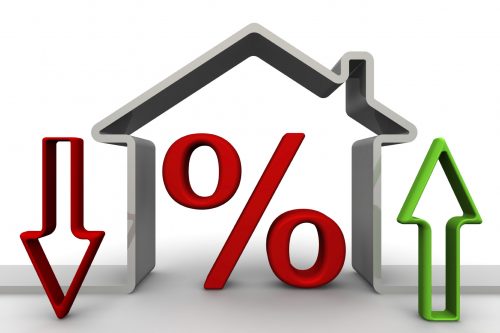How Does The Fed Interest Rate Increase Affect Buying a Home?

If you’re thinking of buying a home and wondering about interest rates and credit, you’re already on the right track. The average interest rate for a 30-year (fixed) mortgage right now is between 3.25 and 4.125 percent, depending on the lender. (Those are, of course, the rates offered to borrowers with great credit.) I think just about any financial expert in the country will still call these rates outstanding and worth jumping on.
When the Fed raises rates
The first thing to understand is that “the Fed” (the Federal Reserve) does not control mortgage interest. The Fed rate is what financial institutions charge each other for overnight lending. The amount influences mortgages because the banks’ cost of financing is directly affected. Like any business, when banks’ costs go up, so do prices to their customers. When the Fed rate rises, banks respond by charging more for loans.
The Fed raised its rate ever so slightly (about one quarter of one percent) at the end of 2015. Mortgage rates barely budged (if at all) in response. Many analysts expect the rate to go up about another percentage point by the end of 2016, and more in 2017. Although mortgage lenders don’t raise rates point-for-point along with the Federal Reserve, some experts predict the cost of a home loan will go up at least half a percentage point in 2016.
Higher rate – less home
When mortgage rates climb, the housing market loses. The simple reason is that for the same monthly payment, the buyer is obliged to settle for a lower purchase price.
We can do the math to see an example. Let’s say a home-buying couple can afford a monthly payment of $1,500, and let’s also assume they qualify for the best rate available. At 4 percent, this monthly payment will get them a $314,200 loan. Add their 20 percent down payment and we see that the purchase price on their new home is $392,750.
When the interest rate goes up by just half a percent, to 4.5 percent, the monthly payment rises to $1,592. Unfortunately, they already decided that $1,500 is their limit, so now our couple is forced to shop for a lower-priced home ($370,000, to be exact).
A one-half percent rise in rates cost this couple $22,750 in purchasing power. And that’s not chump change.
Incidentally, in the 4 percent scenario, our couple will pay about $226,000 in interest over the life of their loan. When the rate goes up to 4.5 percent, they’re stuck with an even bigger interest tab — about $244,000 — even though they borrow less!
Credit really, really matters
Your credit score can cost big money in the same way an interest rate hike can. That’s because if you don’t qualify for the best rates, you lose purchasing power even if rates don’t go up. An otherwise qualified borrower with only good credit is likely to pay one half a percent more than a borrower with great credit. We’ve already seen what a half percent does to the shopping budget.
The bottom line
One thing is certain. Rates will rise — maybe this year, maybe farther out. And once the Federal Reserve rate goes up enough, mortgage lenders will respond with increases of their own. If the Fed increases its rate steadily in quarter-point increases, as many people think, mortgage rates will also inch upwards. If you’re hoping to buy a home in the foreseeable future, take note. In 1984, the mortgage rate was fourteen percent even with a twenty percent down payment.
See more at…https://www.creditrepair.com/blog/mortgage-and-housing-information/how-does-the-fed-interest-rate-increase-affect-buying-a-home/
P.C. https://www.myfirstcondo.com
